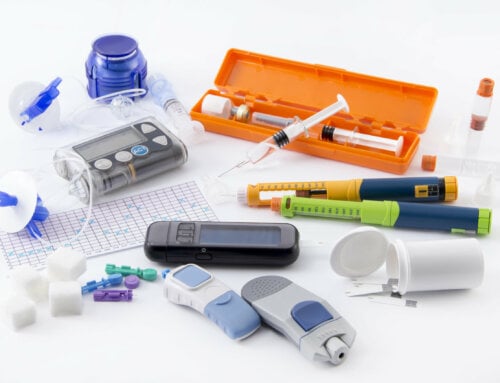People with diabetes can improve their overall well-being by maintaining a healthy weight and eating the right foods. Sometimes it can be difficult to resist the temptation to overindulge. Discover 4 ways to trick your brain to eat less.
Often people with diabetes are encouraged by their doctors to eat less especially if they are overweight or obese. There are many different ways to accomplish this, but the basic premise remains the same. Coming up with an eating plan is crucial – a plan to make better choices with smaller portions. People should reduce their intake of calories and burn more calories by exercising. During the initial stages, it can be challenging to reduce the amount of food you eat. Tricking your brain to eat less can help you shed pounds and improve your diabetes self-management program. Losing just 5-10 percent of your overall body weight can make a huge difference in your overall health.
- Eat more slowly and get rid of distractions to help you reduce portions. Studies have revealed people eat faster when they don’t pay attention to the meal. Common distractions include working on your computer or watching television while you eat. Turn off the distractions and focus on eating your food more slowly. Enjoy each bit and think about what you are eating. Researchers found eating more slowly can give you a feeling of satiety because gastrointestinal hormones are released that send a “fullness” signal to your brain.
- Maintaining records of everything you eat in a food diary can help reduce your calorie consumption. Humans are goal-oriented and tracking our progress may help us limit our food intake. Scientists at the University College of London published a study that showed people who used an Internet-based food monitoring service loss more weight than those who did not record their food intake. You can keep a calorie journal on paper or use a spreadsheet on your computer. There are also smart-phone apps and tracking programs that help you keep track of every meal. Thinking about what you eat and being accountable for it can help you to eat less. If you feel tempted, consider keeping sugar-free desserts on hand to help you get past the cravings. Remember to eat them in moderation as they do contain calories.
- Skipping breakfast can make you feel hungrier later in the day which can ultimately result in weight gain. It is important to eat breakfast when you have diabetes to help you maintain healthy blood sugar levels and reduce glucose production in the liver. Breakfast can also help boost your metabolism. Eating three meals and two snacks throughout the day (if you are not on basal/bolus insulin) can ward off hunger pangs that can lead to binging and weight gain.
- Trick your brain by using a smaller plate and larger fork. Research proves a smaller plate encourages you to reduce your portions and still feel full. Studies have also proven a bigger fork makes you eat less food. Making these simple changes can help you eat less without feeling hungry.
While there is no substitute for watching what you eat and exercise, you can help the process along by tricking your brain. Making a few simple lifestyle changes can help you eat less, shed pounds and ward off hunger. Maintaining a healthy weight can also help reduce health complications associated with diabetes including heart disease and stroke.







Leave A Comment